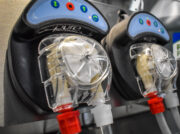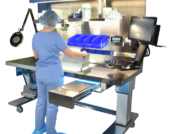
TAG: soaking

Jan 21, 2021
5 Ways Healthcare Reprocessing Sinks Improve Workflow and Productivity
In central sterile processing and GI departments, the decontamination area’s reprocessing sinks represent the most critical area in ensuring that instruments are being properly cleaned. While commercial stainless steel sinks are commonly used for reprocessing medical instruments, not all sinks are created equally. How healthcare reprocessing sinks are a better option than commercial stainless steel…
Read More





